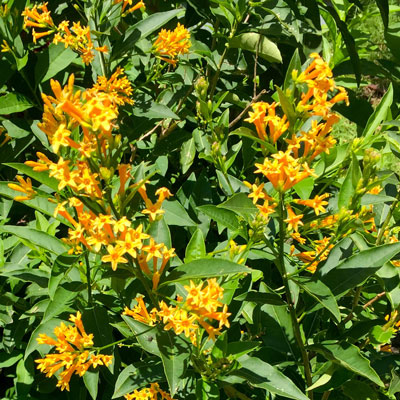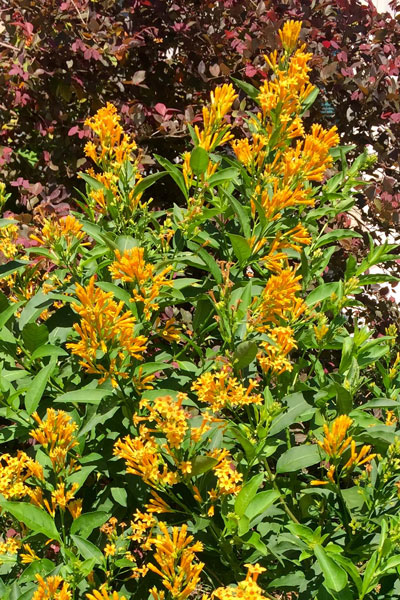Cestrum ‘Orange Zest’
My wife and I were driving down one of the main streets in McKinney a few years ago just about this time of the year. She was actually driving, and out of the corner of my eye I caught glimpse of something brilliant gold. I exclaimed with a sound that made her think they’d left the door open at Fort Knox as I implored her to “Stop!”

Actually, instead of slamming on the brakes on a busy street, she slowed as she’s learned to do, and we circled the square block and came up to the house. I quickly texted a photo to my buddy Steven Chamblee and he gave me a great start at the ID.
I hopped out of the car (as well as I hop) and went up to the door to ask if I could take photos. I told the lady I was unfamiliar with the plant, but that it was just beautiful. Unfortunately, she didn’t remember its name. But luckily she thought it still had its nametag from the prior spring, and sure enough, there it was: Cestrum ‘Orange Zest.’ Just as Steven had said.
So I’ve been seeing it other places since, and you in South Texas are probably much more familiar with it. And this past Sunday my buddy Steve Huddleston with the Fort Worth Botanic Garden featured it in his weekly report.
Here’s what you’ll want to know…
• Shrub to 6 ft. tall and wide.
• Hardy to Zone 8 and southward. That means it will often freeze to the ground in the I-20 corridor, at least in DFW and westward. If it freezes to the ground, it usually comes back strongly the following spring. But in South Texas it will make a lovely medium-sized shrub.
• Best in full sun. It can handle the heat.
• Its showy golden-orange flowers are produced from spring until frost.

• As you can see in my photo, it looks great alongside bronze- of purple-leafed plants. This would be spectacular planted with copper plants, for example.
• Fragrant flowers, especially in the calm evening air.
• Popular stop for hummingbirds and butterflies.
